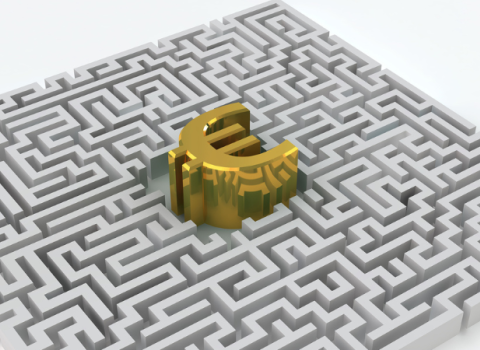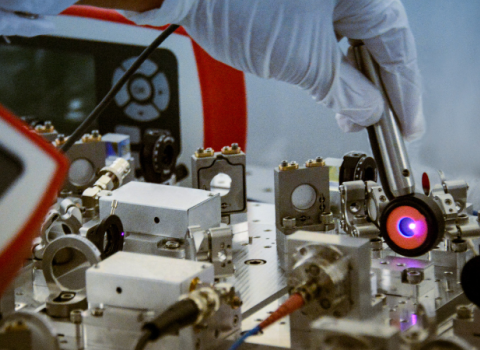Classic double-slit experiment carried out for first time with single antielectrons
The positron, or the corresponding antiparticle of the electron, also has a dual nature: it is both a wave and a particle. This characteristic was established by observing, for the first time, antimatter wave interference with single positrons and confirms that the laws of quantum mechanics also apply to antimatter.
It is a version, with single antimatter particles, of the classic double-slit interference experiment first carried out with photons by Thomas Young, then proposed conceptually with single particles by Albert Einstein, and later carried out with single electrons by Gian Franco Missiroli, Pier Giorgio Merli and Giulio Pozzi and published in 1976.
Researchers from the Politecnico di Milano, the INFN National Institute for Nuclear Physics, the Università degli Studi di Milano and the Albert Einstein Center (AEC) for Fundamental Physics and the Laboratory for High Energy Physics (LHEP) at the University of Bern have successfully carried out the sophisticated experiment using single positrons.
Great successes are not only achieved in large laboratories. This accomplishment is the result of the hard and enthusiastic work of a small group of passionate researchers, said Rafael Ferragut, head of the L-NESS Positron Laboratory at the Politecnico di Milano in Como, which hosted the experiment.
In the experiment, which is based on interferometry, antimatter “waves” generated by a single positron, when they interfere constructively, they collapse and localise in one point, behaving like a single particle, and are revealed, demonstrating directly for the first time that wave-particle duality also applies to antimatter. The study was published on 3 May in Science Advances.
In the classic double-slit experiment, a particle beam is launched from a source to a detector. Gratings are placed in the path with two slits through which the particles pass. If the particles behaved simply as particles, they would travel in a straight line and produce a pattern on the detector that corresponded to the slits. But if the particles have a wave nature, a striped pattern appears on the detector, with different maximums and minimums, which does not correspond to the slits. The new pattern is generated by the interference of the waves that pass through the slits.
From a conceptual perspective, to interpret the result of the experiment, we must consider that a single particle is propagated in space like a periodic vibration, or a wave: a concept introduced by Louis de Broglie in 1923. From a technical perspective, to carry it out the researchers designed and implemented an extremely accurate, high-precision device.
The experiment has three main elements: the beam, the interferometer and the detector. The beam of single positrons of clearly defined energy was collimated to improve parallelism. The interferometer has two series of micrometric slits with a high degree of parallelism and periodicity. The first series of slits was used to give coherence to the individual waves. Then, the waves propagate in space for a certain distance until they reach the second series of slits where they form secondary waves. These waves interfere with one other in a constructive or destructive way forming a pattern or diagram of interference on the farthest placed emulsions.
The originality of the asymmetric configuration of the interferometer makes it possible to increase periodicity by five times compared to the first slit. As a result, the periodicity in the interference pattern on the emulsions was approximately 6 micrometres. It was an extremely precise undertaking.
Data was collected for two years and at the same time improvements were made to the interferometer until the resonance could be seen with a highly visible signal. For every measurement, statistics were collected of approximately 20 million positrons on the emulsions, one at a time, for a period of approximately 8 days. The progressing visibility of the fringes according to energy demonstrates unequivocally the quantum nature of interference.
Now, the long-term objective of the experiment is to use the extraordinary precision of interferometry to measure matter-antimatter gravitational interaction.
First demonstration of antimatter wave interferometry
S. Sala, A. Ariga, A. Ereditato, R. Ferragut, M. Giammarchi, M. Leone, C. Pistillo, P. Scampoli.
Science Advances 03 May 2019: Vol. 5, no. 5, eaav7610
DOI: 10.1126/sciadv.aav7610
https://advances.sciencemag.org/content/5/5/eaav7610





 A unique international forum for public research organisations and companies to connect their external engagement with strategic interests around their R&D system.
A unique international forum for public research organisations and companies to connect their external engagement with strategic interests around their R&D system.